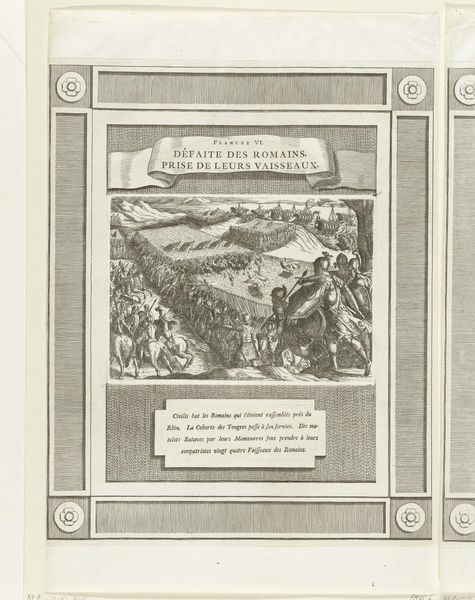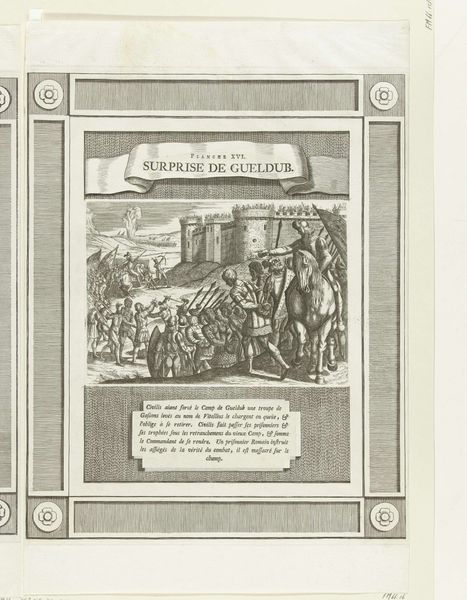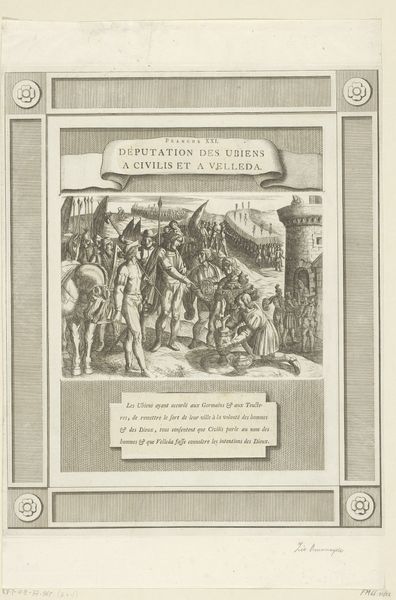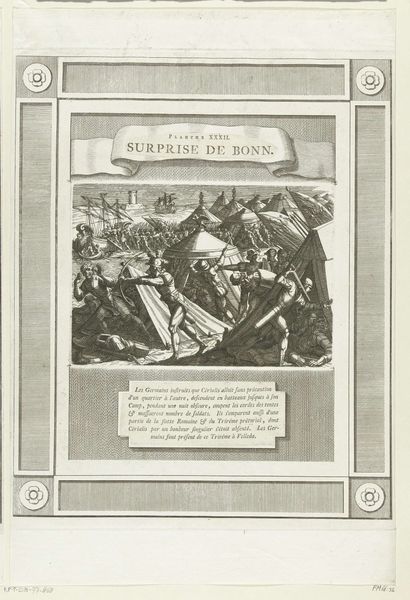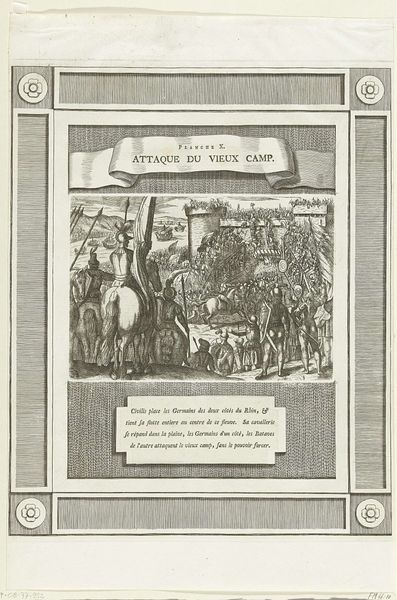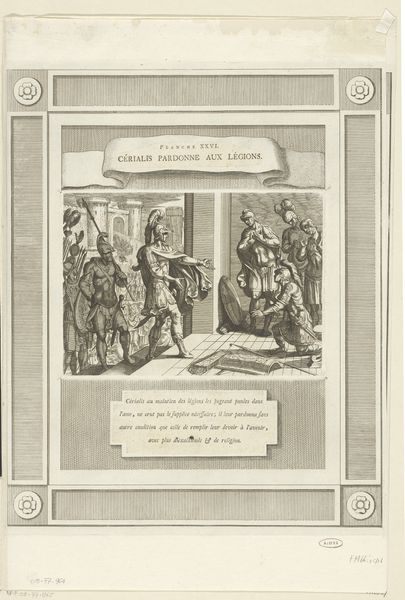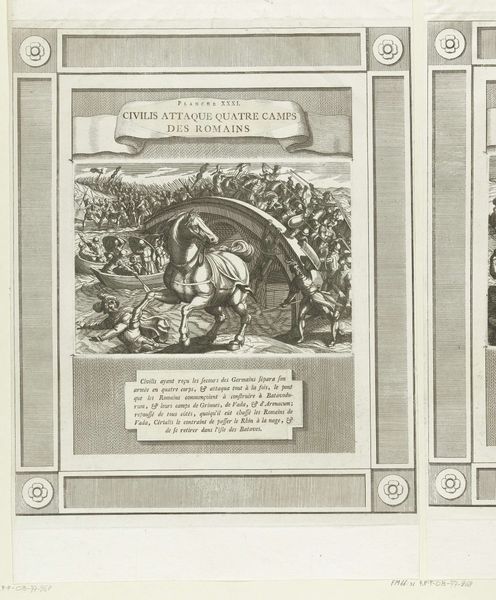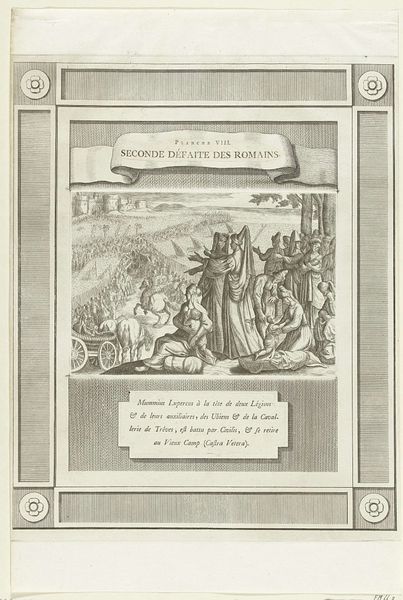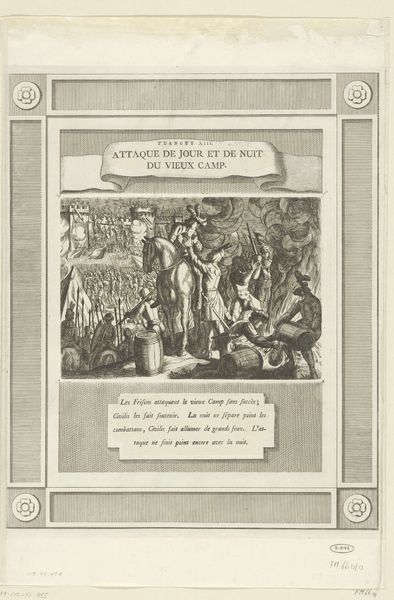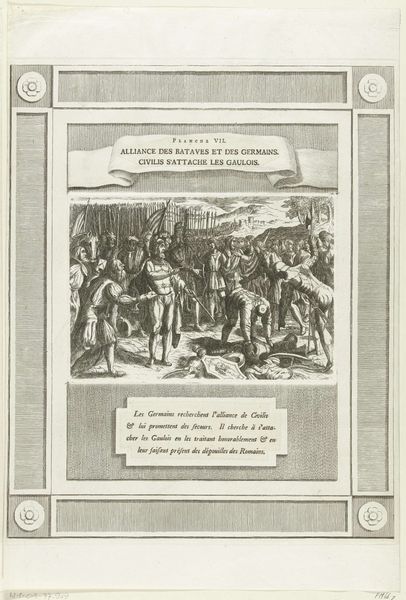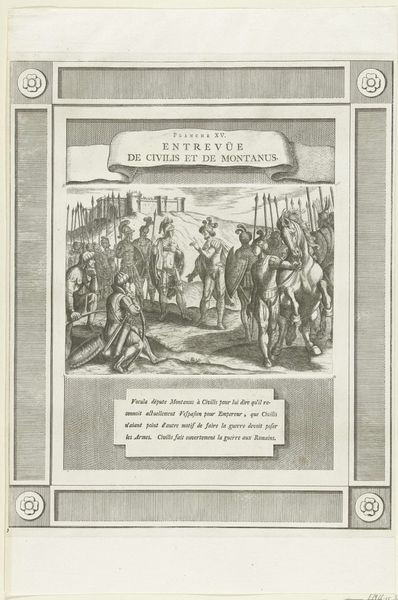
Dimensions: height 140 mm, width 202 mm, height 370 mm, width 300 mm
Copyright: Rijks Museum: Open Domain
Editor: This print, titled "Nieuwe aanval op een Romeinse vesting, 69-70," made between 1768 and 1770 by an anonymous artist, depicts what appears to be a violent battle scene. The stark contrast of light and shadow and the incredible detail, especially considering it's an engraving, are striking. What do you see in this piece? Curator: My focus falls on the composition, immediately noting how the artist manipulates depth and space. Observe the layering of figures, receding from the foreground melee towards the fortified structure in the mid-ground. This spatial recession, coupled with the lines etched to define form, contribute to a highly structured yet dynamic scene. How does the textual inscription play into this? Editor: I noticed it’s in French and seems to describe the action, like a caption, “Attack of the Second Day of the Old Camp.” I hadn’t considered that as part of the formal structure. Curator: Indeed. Its presence contributes to the print’s overall design, framing the central image both visually and narratively. Also note how the artist utilizes light and shadow. Notice where the darkest and lightest areas fall in relation to each other and where they guide our eye across the scene. Are you struck by any patterns? Editor: The foreground is generally darker, with intense highlights on the figures in motion. That certainly leads the eye. Curator: Precisely. The artist has skillfully manipulated contrast to accentuate the drama of the conflict and draw the viewer into the heart of the action. This controlled distribution of tonal value serves not only to illuminate the scene but also to underscore its thematic gravity. We could consider, does this strategic manipulation alter the reality? Editor: It’s fascinating to see how much the formal aspects influence how we read a narrative piece like this. Curator: Absolutely. Close observation and engagement with structural and theoretical aspects unveil dimensions we would otherwise miss. Editor: I'll definitely look more at the formal structure now and reflect more upon the purpose of lines and shapes in the entire composition and consider the potential manipulation to drive the meaning.
Comments
No comments
Be the first to comment and join the conversation on the ultimate creative platform.
